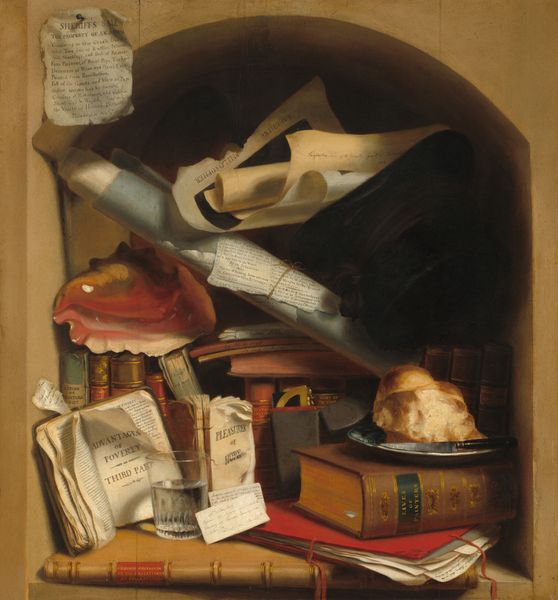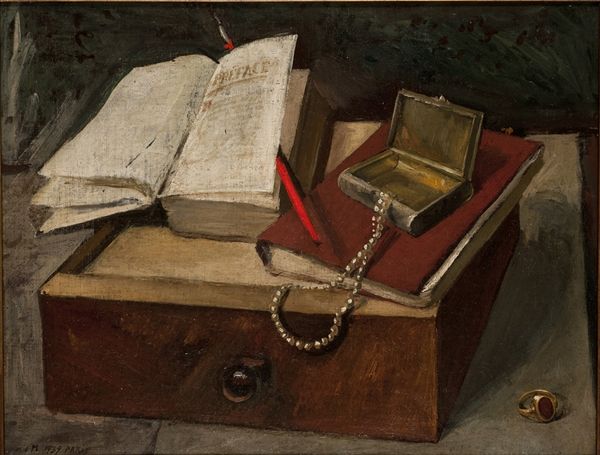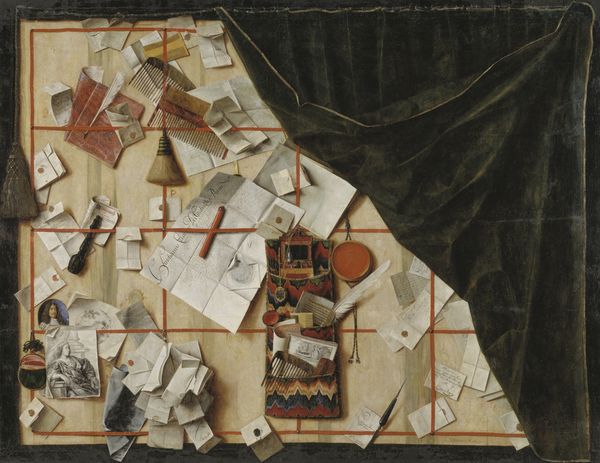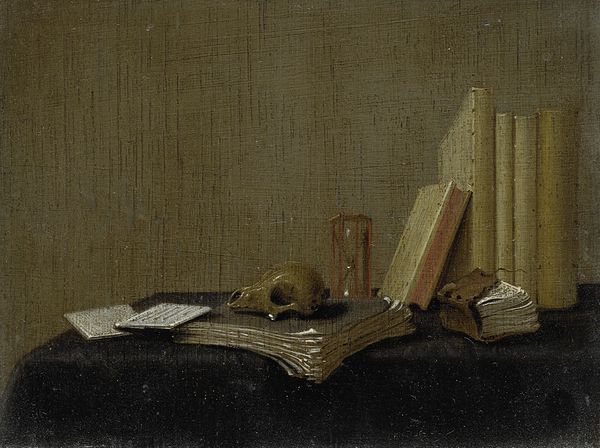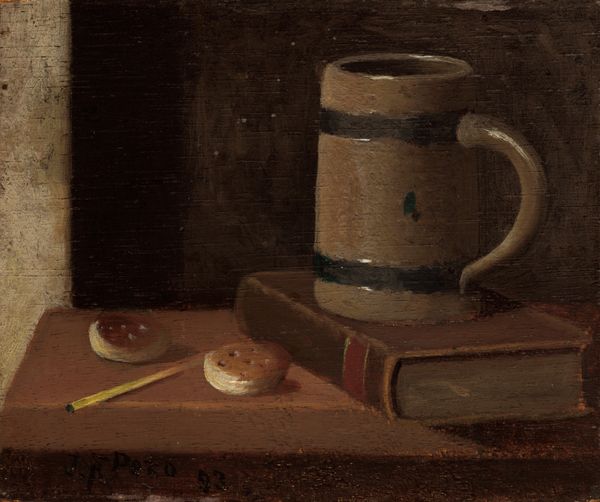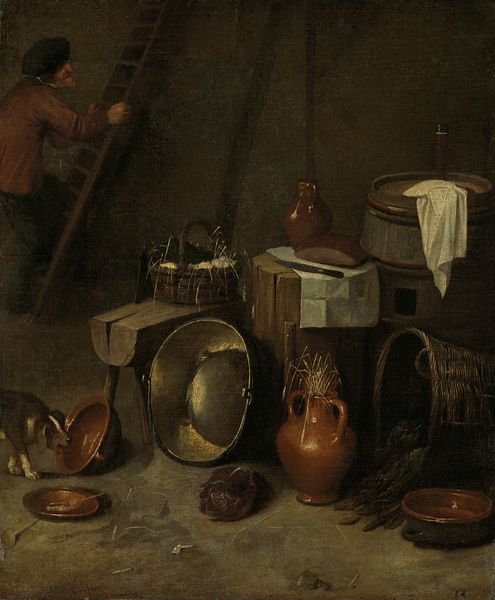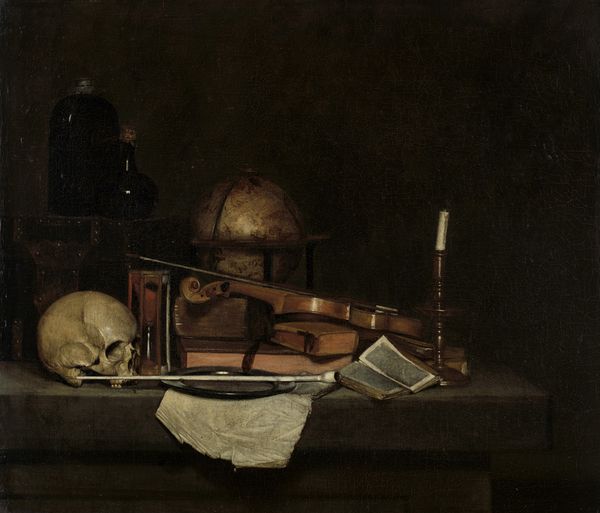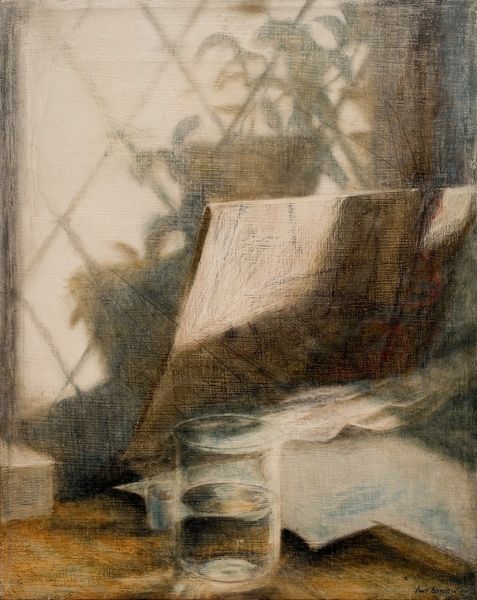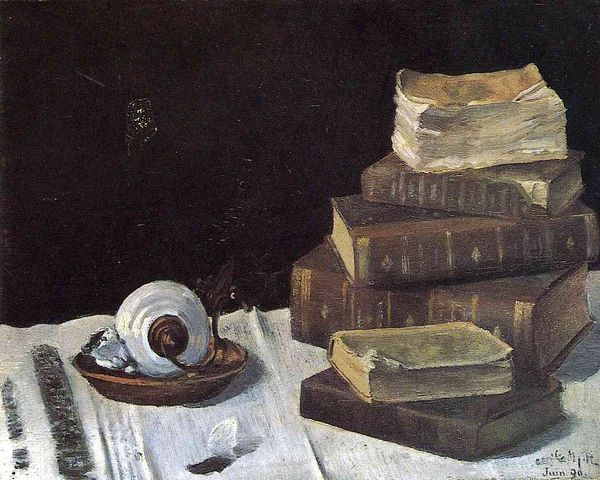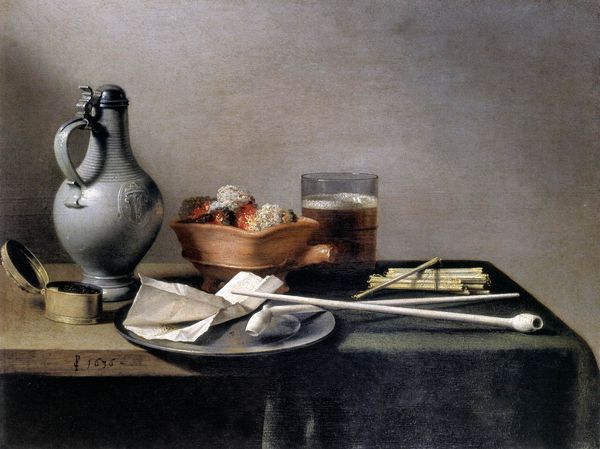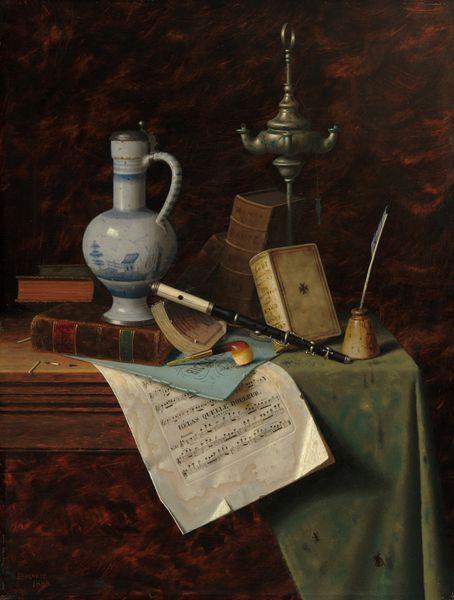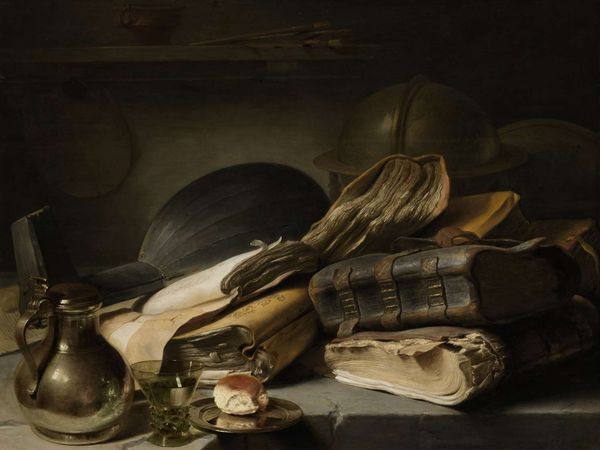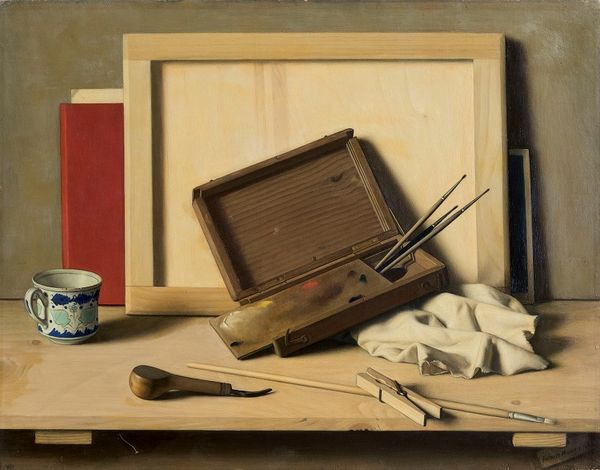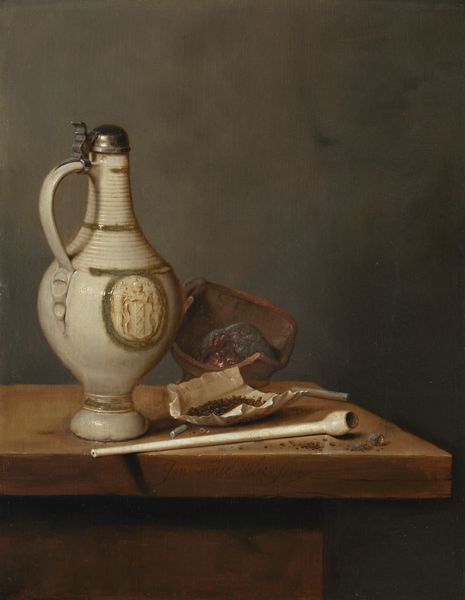
painting, oil-paint
#
baroque
#
dutch-golden-age
#
painting
#
oil-paint
#
vanitas
#
genre-painting
Dimensions: height 26.5 cm, width 41.5 cm, depth 5.5 cm
Copyright: Rijks Museum: Open Domain
Editor: Here we have "Still Life with Books," a painting created between 1625 and 1630 by Jan Davidsz de Heem. It's a Dutch Golden Age oil painting, dominated by piles of aged books and loose papers, alongside what seems to be a lute. The whole scene feels incredibly still and contemplative, almost melancholic. What story do you think it's trying to tell us? Curator: Well, given the subject matter and the period, it’s difficult to overlook the socio-cultural context that framed its creation. Do you see how the books and lute seem carefully arranged, almost posed? These meticulously staged scenes gained immense popularity in the 17th-century Dutch Republic. Editor: They were fashionable status symbols, then? Curator: Partly. They reflected not just wealth but intellectual pursuits. Look at the 'vanitas' elements, though, signaling the transience of life and earthly knowledge. The slightly disheveled appearance implies knowledge isn't perfectly contained or enduring. Editor: So, it’s about reminding viewers of their mortality amid societal obsessions? Curator: Precisely. De Heem's choices—composition, lighting, and symbolism—reflects the Republic's grappling with its newfound prosperity and anxieties about earthly concerns overshadowing spiritual awareness. The arrangement of objects on that table tells a story beyond mere aesthetics. Editor: I never thought of still lifes as so politically charged, but looking at it now, it’s hard to ignore all these historical implications. Thanks for illuminating that for me. Curator: It's been my pleasure; I've come to see art through both our perspectives, thank you for your input!
Comments
rijksmuseum about 2 years ago
⋮
Grey and brown tints dominate this composition, and a shadow spreads slowly over the wall. The painting alludes to the fleetingness of life. The battered books allude to transience. The music produced by the lute is momentary, a symbol of the brevity of life. A literal reference to death is inscribed on the sheet of paper draped over the table’s edge: ‘finis’ ([the] end).
Join the conversation
Join millions of artists and users on Artera today and experience the ultimate creative platform.
